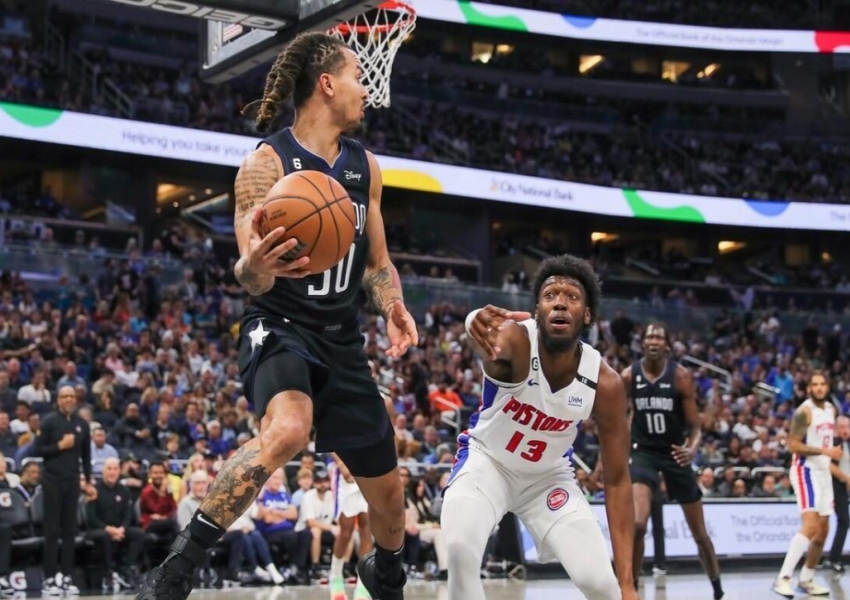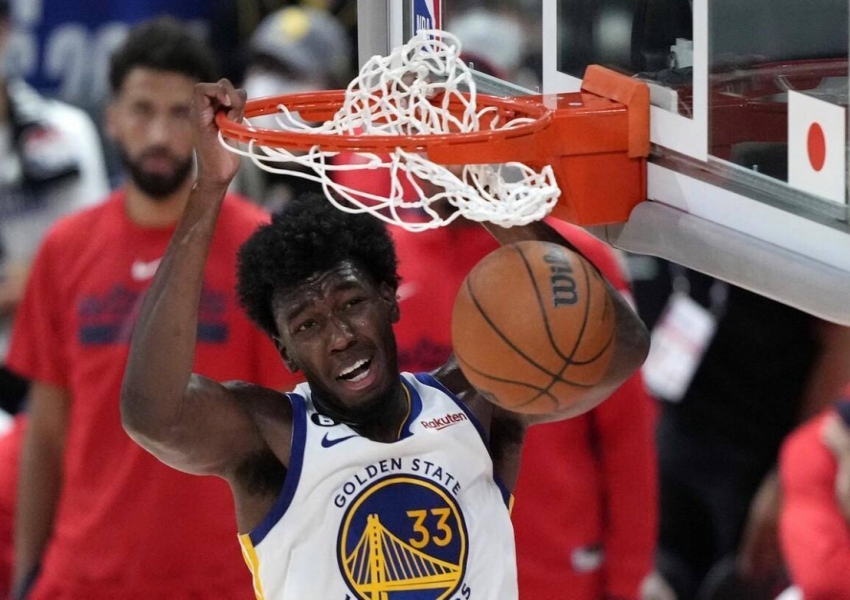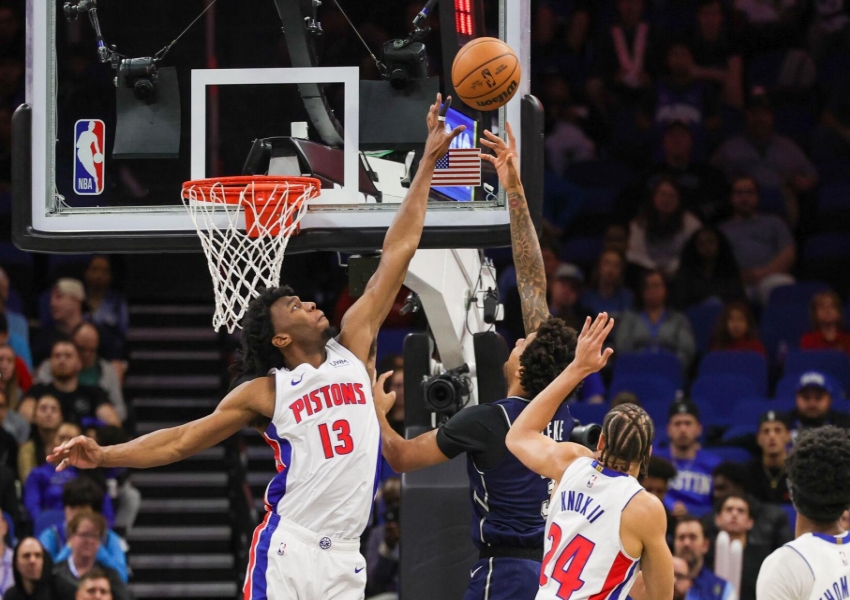Where’s the Talent? Where’s the Potential? From the Warriors' "Crown Prince" to the League's Bottom Rung, It Only Took Him 4 Years
James Wiseman, the highly touted second overall pick of the 2020 NBA Draft, has seen his career take a dramatic nosedive. According to a report by Evan Sidery, the Detroit Pistons have decided not to extend a qualifying offer to Wiseman, effectively making him an unrestricted free agent. This means that the player once heralded as a future star is now staring down the possibility of signing a minimum contract—a stark contrast to the lofty expectations that surrounded him just a few years ago.

Wiseman entered the league under a spotlight, being selected by the Golden State Warriors, one of the most successful franchises in NBA history. At the time, the Warriors were at a low point: Kevin Durant had left, and both Stephen Curry and Klay Thompson were sidelined with injuries. The team managed only 15 wins that season, finishing with the worst record in the league. This dismal performance landed them the second overall pick, which they used to draft Wiseman, hoping he could be the piece that would help restore their dominance.

The Warriors have historically boasted an elite perimeter game, led by Curry and Thompson, but they have often lacked a strong inside presence. Wiseman, with his blend of size, athleticism, and skill, seemed like the perfect fit to shore up the team’s interior. However, despite his undeniable physical gifts and technical skills, Wiseman struggled to grasp the Warriors' complex system. His basketball IQ appeared lacking, and he quickly fell out of favor with the coaching staff.

In his rookie season, Wiseman averaged 11.5 points and 5.8 rebounds per game. While these numbers are respectable for a first-year player, advanced metrics painted a less flattering picture. Offensively, Wiseman's touch was inconsistent—his mid-range shooting percentage was just 33%, and his offensive rating of 101.8 per 100 possessions was worse than 93.6% of players in the league, ranking near the bottom for his position. Defensively, he fared even worse, allowing 110.6 points per 100 possessions, the worst mark on the team.
Wiseman's inability to perform basic center duties like setting effective screens and securing rebounds was particularly concerning. His rebounding rate didn’t crack the top 50 in the league, and his average of 1.8 screen assists per game was less than half of what players like Steven Adams and Jonas Valanciunas provided. As a result, Kevon Looney began to take over Wiseman’s minutes. Although Looney lacked Wiseman’s natural talent, his proficiency in setting screens, positioning himself for rebounds, and finishing plays around the basket made him a more reliable option. Looney’s contributions were pivotal in the Warriors’ 2022 championship run.
The rise of Looney expedited Wiseman’s exit from Golden State. By the trade deadline last season, the Warriors had seen enough and shipped him to the Detroit Pistons. Many believed that a fresh start in a rebuilding environment like Detroit would allow Wiseman to regain his confidence and showcase his potential. Unfortunately, his stint with the Pistons has been similarly disappointing.
Wiseman’s game has remained lackluster. Offensively, he lacks aggressiveness and efficiency. Defensively, he is frequently outmaneuvered and overpowered, with poor footwork and limited rim protection. His attempts to contribute as a role player have also fallen short; he struggles to set solid screens, fails to secure rebounds, and is slow in ball movement and tactical execution. When Wiseman was on the court, the Pistons’ offensive rating dropped by 3.7 points per 100 possessions, and their defensive rating worsened by 3.5 points per 100 possessions—a troubling sign for a player on a team with minimal expectations.
Despite these setbacks, there is still hope for Wiseman. At just 22 years old, he has plenty of time to develop and refine his game. However, his high salary as a second overall pick—his qualifying offer would have been $15 million—makes him a risky investment. A minimum contract might be more appropriate, offering a team a low-risk opportunity to see if Wiseman can finally tap into his potential.
Wiseman’s journey from being the “Crown Prince” of the Warriors to a player struggling to stay in the league is a cautionary tale. When he was drafted, he was seen as a game-changer, someone who could help Golden State return to the pinnacle of the NBA. His early promise, coupled with the Warriors’ dire need for an inside presence, created sky-high expectations. However, the NBA is an unforgiving league where raw talent alone is not enough. Basketball IQ, work ethic, and the ability to adapt to a team’s system are just as crucial, if not more so.
The Warriors’ complex style of play, which emphasizes ball movement, spacing, and intelligent decision-making, proved to be too much for Wiseman to handle. His struggles to fit into this system highlighted his deficiencies and led to a rapid decline in his role on the team. When Looney emerged as a more dependable option, it became clear that Wiseman’s time in Golden State was limited.
In Detroit, Wiseman was given another chance to prove himself, but old habits die hard. His lack of defensive awareness, inability to consistently finish around the rim, and poor rebounding instincts have continued to plague him. These issues have prevented him from becoming the impact player that many envisioned when he first entered the league.
For Wiseman, the path forward involves taking a hard look at his game and making significant improvements. He must develop a better understanding of the game, improve his defensive positioning, and become more assertive on the offensive end. A fresh start with a new team, potentially on a lower contract, might provide him the breathing room he needs to focus on his development without the immense pressure that comes with a high draft pick salary.
As for the teams considering taking a chance on Wiseman, the decision will come down to weighing his potential against his current shortcomings. At his best, Wiseman possesses the physical tools and skill set to be a dominant force in the league. However, realizing that potential will require patience, dedication, and a supportive environment that can nurture his growth.
The story of James Wiseman serves as a reminder of the unpredictable nature of the NBA. High draft picks often come with high expectations, but not every player can meet those expectations immediately, if at all. The league is full of examples of players who took time to find their footing or needed a change of scenery to unlock their potential. Whether Wiseman will join the ranks of those late bloomers or fade into obscurity remains to be seen.
For now, Wiseman’s focus must be on proving that he belongs in the NBA. With the right mindset, work ethic, and guidance, he can still carve out a successful career. The next chapter in his journey will be critical, and it will be up to Wiseman to show that he can rise above his early struggles and fulfill the promise that once made him one of the most highly regarded prospects in the league.
Copyright Statement:
Author: focusnba
Source: FocusNBA
The copyright of this article belongs to the author. Reproduction is not allowed without permission.
Recommended Blog
- Remember Him? Why 25-Year-Old Ex-Laker Lonnie Walker is Still Without a Team
- Refusing to Play for China? Zhao Weilu's Bold Decision Shakes the Basketball World
- 6-for-1 Trade! Clippers Should Move Leonard Quickly
- $110 Million for Three Years? The Inside Story of Paul George's Departure: This Time, You Can't Blame Him
- Zhou Qi and Fanbo Zeng Team Up? Goodbye, 19 Teams! Guangdong Stays Unchanged
- $2.6 Million for a Year! S-Tier Move! Did the Bucks Snag the Best Value in the NBA?
- Sudden NBA Workouts! Goodbye, Yang Hansen! This is China’s Top Basketball Talent...
- $4 Million for One Year: Where Will 35-Year-Old Westbrook Land Next?
- A $16 Million Pay Cut: Klay and Harden to Join the Lakers’ New Big Four?
- Everyone Move Aside! He Became the Leader in His Second Year, Even Pushing a 24-Year-Old Prodigy to the Trade Block